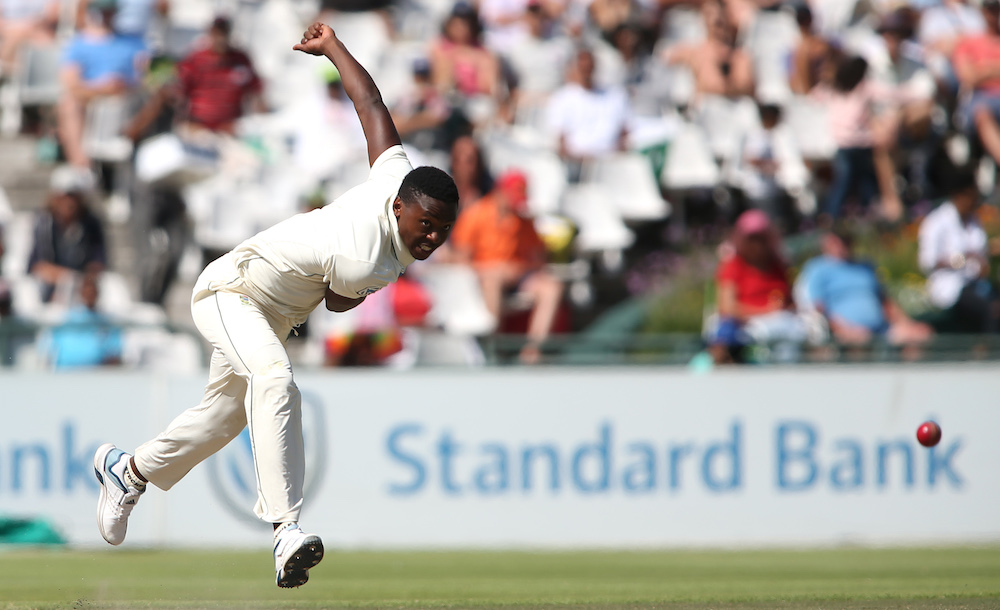Kagiso Rabada’s rise illustrates what is possible when a gifted, young black player enjoys the same opportunities as gifted white ones, writes SA Cricket magazine editor RYAN VREDE.
The last great black fast bowler, Makhaya Ntini, and this generation’s, Rabada, couldn’t have come from more different cricketing backgrounds.
Ntini grew up in the rural Eastern Cape and spent his childhood herding cattle. As a teen, he stopped to watch a game close to his home in Mdingi and was summoned over by a local youth scout to bowl. The rest is history.
Rabada spent the first years of his life in Mamelodi and later on Johannesburg’s West Rand. He lived with his grandparents while his parents completed their studies.
His father, Mpho, is a doctor, mother Florence a lawyer. They moved to the plush Johannesburg suburb of Bryanston when Kagiso was a young child. While he was exposed to township life and the realities thereof through regular weekend visits to family, Rabada’s parents, through their hard work, talent and temperament, ensured their kids’ childhood would be very different from their own. Indeed, very different from millions of black South Africans.
They were able to engineer for young Rabada the opportunities the majority of black parents can’t, for a myriad reasons. He attended traditionally strong cricket schools in Johannesburg, had access to very good coaches, gyms and nutritional advice essential for giving gifted young cricketers the best opportunity to develop elite-level skills and preparing them for professional careers.
Rabada, granted an equal opportunity by the work of his parents, showed that black cricketers can become world class, and shatters the racist notion that cricket is just not a black man’s game.
Rabada rose because of equal opportunity. Ntini rose despite it.
In 2011, I spent a day with Ntini as part of my research for a piece I was working on for this publication. He picked me up in Port Elizabeth and we drove to his childhood home about an hour away. What I saw there gave me a deeper appreciation for what Ntini achieved in his career. To spend the majority of your formative years in a cricketing environment where even the most basic foundations for technical development were missing and yet, somehow, still become one of the game’s great seamers, was nothing short of miraculous.
The ability to bowl a ball in excess of 140km/h is only part of the equation for young quicks with ambitions of going pro. Young fast bowlers, especially those with high base-talent levels, need a high degree of high-performance investment for that talent to bloom into something truly special. The biomechanics of their run-up and action should be analysed and honed at a young age, they need tailored conditioning and nutritional programmes and regular exposure to high-quality batting opposition on high-quality wickets, among other conditions, to give themselves the best chance of playing international cricket.
Considering this, it is no coincidence that there have been so few truly world-class black fast bowlers to emerge since South Africa’s re-admission to international cricket.
That Ntini built a career which spanned 11 years, during which he played 101 Tests, 173 ODIs and 10 T20Is, speaks to his talent and an unrelenting spirit that refused to be less than he saw himself being. Yet, while talented black cricketers in South Africa are not rare, the spirit that Ntini exhibited is.
However, considering South Africa is more than two decades into democracy, a Ntiniesque spirit shouldn’t play as big a role as it does in talent identification and development. This is certainly an essential quality to possess for any extraordinarily gifted player entering, then rising, through the professional ranks. But we need to find a way for that to matter less, and for equal opportunities – the likes of which marked Rabada’s youth – to be more commonplace.
This is a complex matter and there is no easy answer, but that doesn’t mean we stop looking for those answers. Cricket South Africa and government have a mandate to create the environment in which more equal opportunities for black South African cricketers abound. They’ve done so with limited success, and this negligible impact is unlikely to improve exponentially in future.
There is also a responsibility on the private sector to ramp up its funding to township schools and clubs for projects geared towards replicating the conditions gifted cricketers at more affluent schools and clubs experience. Traditional cricketing powerhouse schools must be forced, through legislation, to include a minimum number of black players in their top teams across every age group.
Implementing this policy at professional level is fundamentally flawed. By then, most black players have spent years operating in environments and under conditions inferior to their white peers’. They are behind in their development and this leads to the type of resentment, confusion and frustration that marks our current professional landscape.
Right now, there are black kids with the same base-level talent Rabada started with playing cricket in townships around South Africa. A minute fraction of those will experience a dramatic change in their circumstances that facilitates the equal opportunities Rabada had. That is a cricket tragedy.
For now, we celebrate Rabada’s incredible feat of getting to 200 Test wickets, knowing that for all it means in a cricketing sense, it also represents a real-life example of what is possible for talented black cricketers presented with the most basic of human rights – an equal opportunity.







